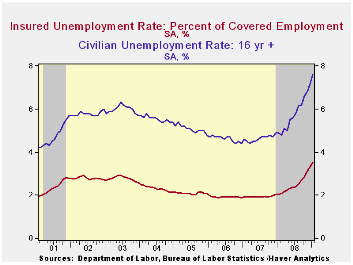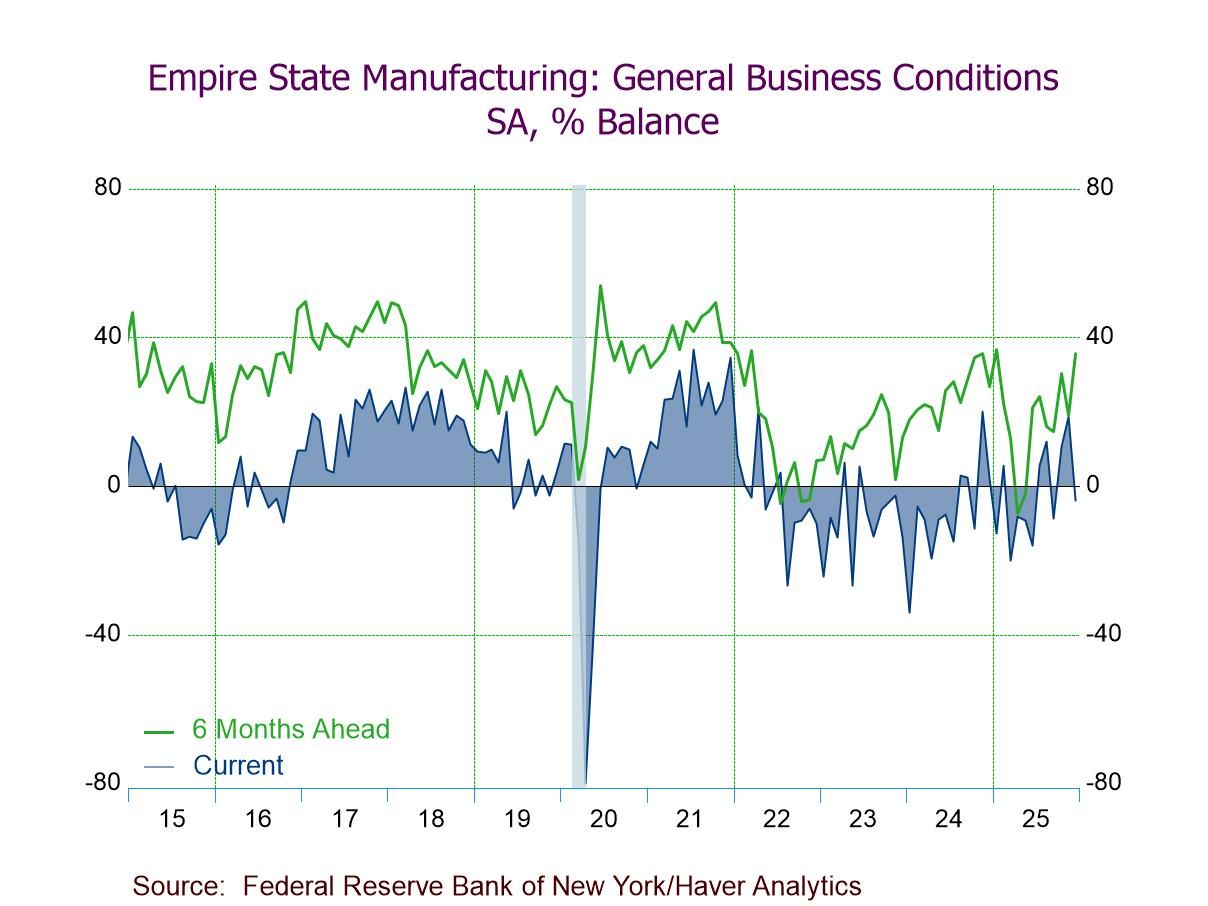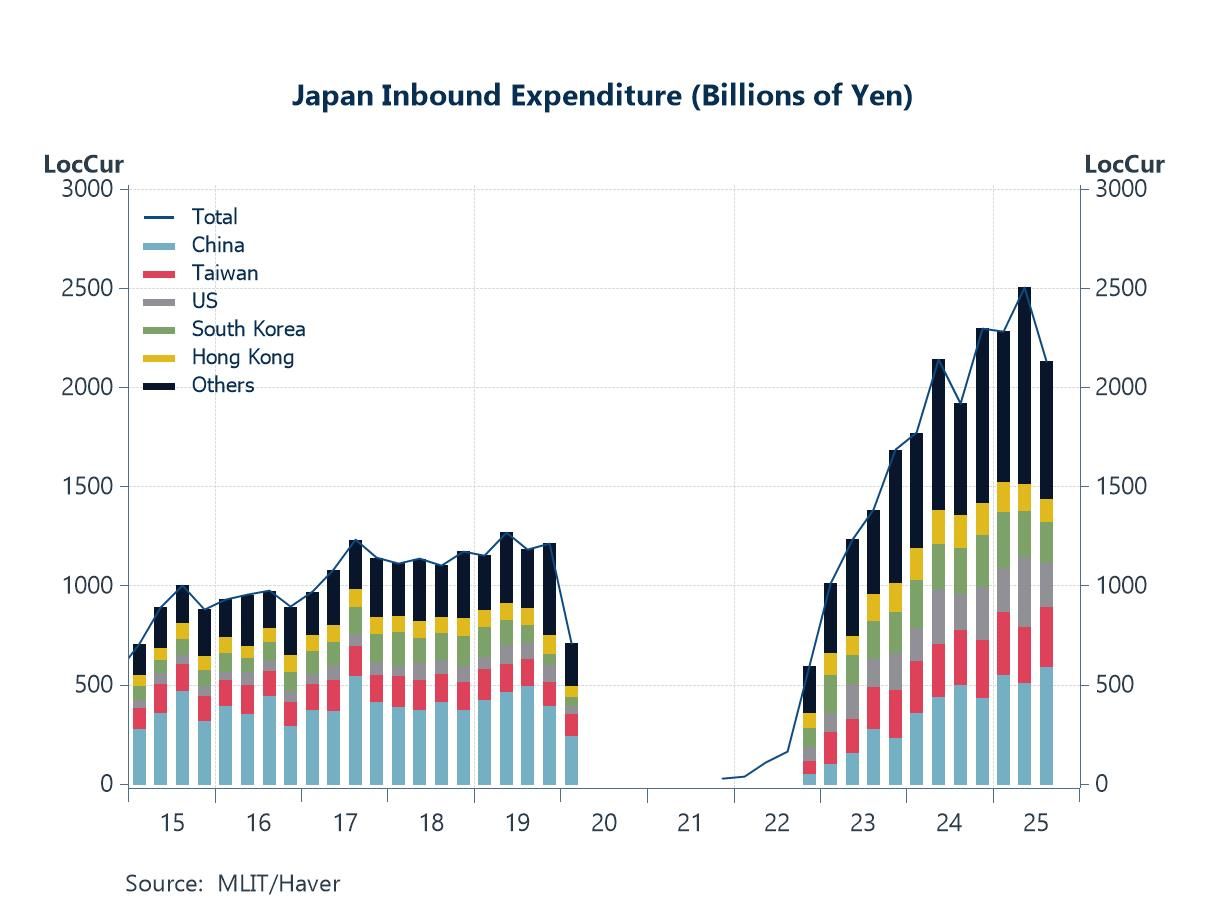 Global| Feb 19 2009
Global| Feb 19 2009U.S. Initial Claims For Jobless Insurance High and Stable
by:Tom Moeller
|in:Economy in Brief
Summary
The U.S. labor market continued quite weak as the Labor Department indicated that initial claims for unemployment insurance remained stable last at 627,000. The prior week's figure was revised up slightly. The latest level again [...]

The U.S. labor market continued quite weak as the Labor Department indicated that initial claims for unemployment insurance remained stable last at 627,000. The prior week's figure was revised up slightly. The latest level again surpassed Consensus expectations for 620,000 initial claims. Initial claims continue to be the highest since late during the sharp recession of 1981-82. During that recession, real GDP fell by 2.9% peak-to-trough.
The latest initial claims figure is for the survey week for February nonfarm payrolls. Claims rose 42,000, or 7.2%, from the January survey period. During the last ten years there has been an 83% (negative) correlation between the level of claims and the month-to-month change in nonfarm payrolls.
The Labor Department indicated that in the week ending February 7, the largest increases in claims were in Kentucky (+8,419), Arkansas (+4,142), Illinois (+3,630), Texas (+3,392), and Missouri (+3,217), while the largest decreases were in California (-5,249), Tennessee (-1,718), Iowa (-1,413), Connecticut (-1,267), and South Carolina
(-1,059).
Labor market stress was further indicated by a huge 170,000 increase in continuing claims for unemployment insurance to 4,987,000. The latest was another record. The series dates back to 1966. The four-week average of continuing claims rose 92,500 to 4,839,500. Continuing claims provide some indication of workers' ability to find employment and they lag the initial claims figures by one week.
Though the latest level of continuing claims was a record, the labor force has grown as well, by more than 27% over the last twenty years. Therefore, the insured rate of unemployment was not at a new high. It ticked up to 3.7% which was the highest since 1983. During the last ten years there has been a 93% correlation between the level of the insured unemployment rate and the overall rate of unemployment published by the Bureau of Labor Statistics. The lower level of the insured unemployment rate versus the BLS figure reflects, among other things, the self-employed. The highest insured unemployment rates during the week ended January 31 were in Michigan (8.1 percent), Idaho (7.0), Oregon (7.0), Pennsylvania (6.4), Wisconsin (6.3), Nevada (5.9), Alaska (5.8), Montana (5.6), Rhode Island (5.6), and Indiana (5.5).
The unemployment insurance claim data is available in Haver's USWEEKLY database.
Deciphering the Liquidity and Credit Crunch 2007-08, published by the University of Princeton, can be found here.
| Unemployment Insurance (000s) | 02/13/09 | 02/06/09 | 01/30/09 | Y/Y | 2008 | 2007 | 2006 |
|---|---|---|---|---|---|---|---|
| Initial Claims | 627 | 627 | 631 | 83.3% | 420 | 321 | 313 |
| Continuing Claims | -- | 4,987 | 4,817 | 79.8% | 3,342 | 2,552 | 2,459 |
Tom Moeller
AuthorMore in Author Profile »Prior to joining Haver Analytics in 2000, Mr. Moeller worked as the Economist at Chancellor Capital Management from 1985 to 1999. There, he developed comprehensive economic forecasts and interpreted economic data for equity and fixed income portfolio managers. Also at Chancellor, Mr. Moeller worked as an equity analyst and was responsible for researching and rating companies in the economically sensitive automobile and housing industries for investment in Chancellor’s equity portfolio. Prior to joining Chancellor, Mr. Moeller was an Economist at Citibank from 1979 to 1984. He also analyzed pricing behavior in the metals industry for the Council on Wage and Price Stability in Washington, D.C. In 1999, Mr. Moeller received the award for most accurate forecast from the Forecasters' Club of New York. From 1990 to 1992 he was President of the New York Association for Business Economists. Mr. Moeller earned an M.B.A. in Finance from Fordham University, where he graduated in 1987. He holds a Bachelor of Arts in Economics from George Washington University.






